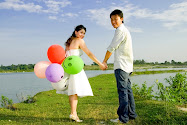I have been concentrate on portrait photography quite a long time, but i guess, not much people know why i concentrate on it, even some of them misunderstood the reason behind.
Well~ I seldom explain why. But since i have organize few times of model shooting activity and invited some of my friend to join, i hope they themselves understand why are they here, but not because of my invitation, not because of pretty girls =)
So, why portrait? the reason behind is a very subjective perspective, u not necessary agree on it. It is all about VALUE, the value added into my art & photography. Maybe when u capture a so called "meaningful" photo: a very upset old guy with lots of wrinkle on his face, smoking in a broken wooden house and a piece of old lady photo on the floor... Well~ this photo is great, u may win in a competition~ but do u think the old guy will appreciate what u have done? u make use of his bitter moment for your own art work, and u HAPPY with his SADNESS. Because of others sadness/bitterness = art or the so called meaningful photos, the great photographer of "The Starving of Sudan" has commit suicide. So, who appreciate your 'meaningful' photo?
So u see, the value added is, photo i have taken, there is someone appreciate. I capture their happiness, i capture their beauty, and important is, they happy with it. If i have capture for 1000 people, 1000 ppl appreciate my work, likewise, if u have capture 1000 of 'meaningful' photos, who else appreciate? Maybe only one person will appreciate, is you your self. A very simple example, if one day one of my portrait photo has been publish in a magazine, for sure the model of the photo will quickly buy the magazine, share with her friend and keep that magazine for life (perhaps.. haha), but if my "old guy" photo publish in the magazine.... well, will someone QUICKLY buy that magazine? share with friend? keep the magazine? will u?
I'm not a rich guy, and i have invest a lots of money into photography, so i think i must do something which is more valuable. At least I'm not 'syok sendiri' with the so call meaningful photo, but someone appreciate my work. That is the VALUE behind.
Others happiness, my art =)
Same reason, if there is any miss Malaysia competition, cat walk, bikini and what so ever, even though it is so call portrait as well, but i definitely won't go for that.

"The Starving of Sudan"
A very great photo that alert the world about the famine in Sudan, but the photographer commit suicide because of the pressure being blame by the world for not saving the girl. There is always a ethic conflict if others sadness/bitterness = art.





























































